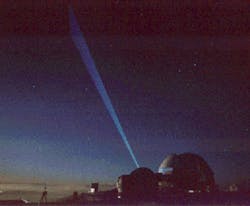Boeing finishes upgrade of advanced electro-optical system for space surveillance
June 22, 2012
MOUNT HALEAKALA, Hawaii, 22 June 2012. The Boeing Company [NYSE: BA] has completed a two-year modernization effort for the advanced electro-optical system (AEOS), a powerful telescope used for research and space situational awareness by the U.S. Air Force Research Laboratory (AFRL). The Air Force has declared initial operational capability (IOC) for AEOS, signifying that the telescope is fully upgraded and ready to provide imagery and surveillance of objects in near-Earth and deep-space orbits. AEOS, measuring 12 feet in diameter and weighing 75 tons, is the largest telescope in the U.S. Department of Defense inventory. It is one of a half-dozen highly sophisticated telescopes at the Maui Space Surveillance Complex that are used to track and image space objects such as satellites and manufactured debris. The AEOS is specifically designed to improve the means of collecting, and the quality of, space data at the Maui Space Surveillance Complex facility in Hawaii. Primarily intended for Department of Defense space surveillance missions, the telescope is also used by scientific and academic astronomy communities from across the United States.
The AEOS originated in the 1980s when the Air Force was attempting to develop a ground-based laser anti-satellite capacity. The Maui Space Surveillance Complex in Hawaii was selected as a location due to its maritime location, 10,000 foot altitude, visibility and location near the equator.
Under the AFRL's Innovative Research and Optical Support Services contract, Boeing is responsible for replacing aging sensors, control software and computer systems for the telescopes at the complex.
Boeing and Air Force officials participated in a ceremony on Mount Haleakala on June 13 to celebrate the AEOS milestone as well as the IOC of a 1.6-meter-diameter telescope that Boeing recently upgraded.
Voice your opinion!
Voice your opinion!

